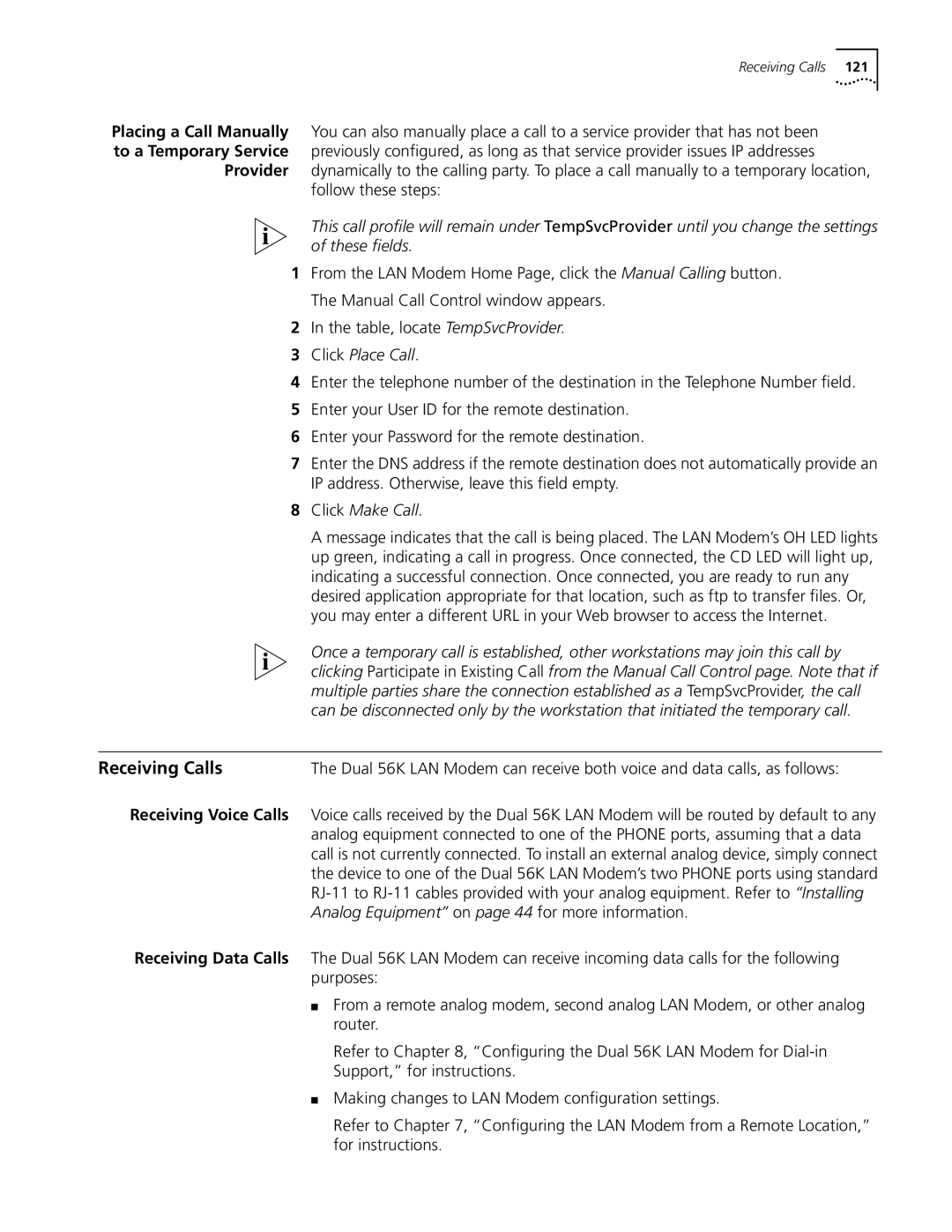
Receiving Calls 121
Placing a Call Manually You can also manually place a call to a service provider that has not been to a Temporary Service previously configured, as long as that service provider issues IP addresses
Provider dynamically to the calling party. To place a call manually to a temporary location, follow these steps:
This call profile will remain under TempSvcProvider until you change the settings of these fields.
1From the LAN Modem Home Page, click the Manual Calling button. The Manual Call Control window appears.
2In the table, locate TempSvcProvider.
3Click Place Call.
4Enter the telephone number of the destination in the Telephone Number field.
5Enter your User ID for the remote destination.
6Enter your Password for the remote destination.
7Enter the DNS address if the remote destination does not automatically provide an IP address. Otherwise, leave this field empty.
8Click Make Call.
A message indicates that the call is being placed. The LAN Modem’s OH LED lights up green, indicating a call in progress. Once connected, the CD LED will light up, indicating a successful connection. Once connected, you are ready to run any desired application appropriate for that location, such as ftp to transfer files. Or, you may enter a different URL in your Web browser to access the Internet.
Once a temporary call is established, other workstations may join this call by clicking Participate in Existing Call from the Manual Call Control page. Note that if multiple parties share the connection established as a TempSvcProvider, the call can be disconnected only by the workstation that initiated the temporary call.
Receiving Calls | The Dual 56K LAN Modem can receive both voice and data calls, as follows: |
Receiving Voice Calls Voice calls received by the Dual 56K LAN Modem will be routed by default to any analog equipment connected to one of the PHONE ports, assuming that a data call is not currently connected. To install an external analog device, simply connect the device to one of the Dual 56K LAN Modem’s two PHONE ports using standard
Receiving Data Calls The Dual 56K LAN Modem can receive incoming data calls for the following purposes:
■From a remote analog modem, second analog LAN Modem, or other analog router.
Refer to Chapter 8, “Configuring the Dual 56K LAN Modem for
■Making changes to LAN Modem configuration settings.
Refer to Chapter 7, “Configuring the LAN Modem from a Remote Location,” for instructions.
